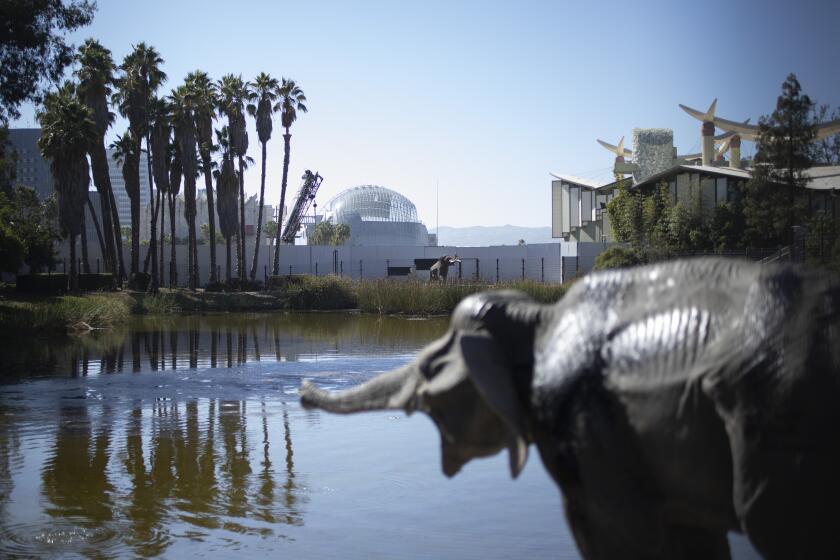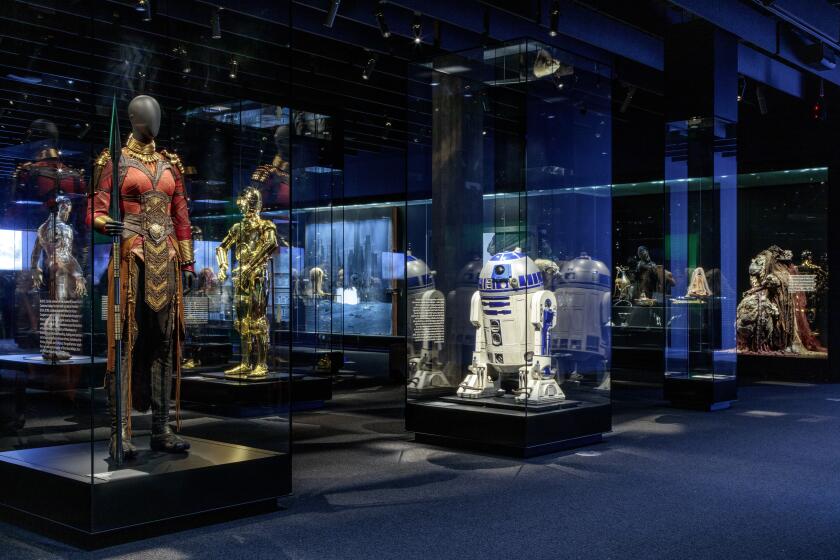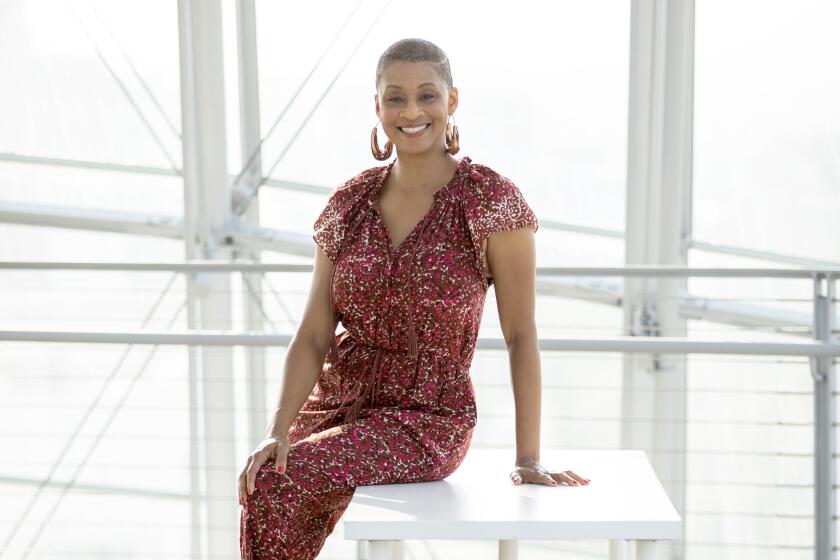The Oscars are a lousy gauge of film history. The Academy Museum is already doing it better
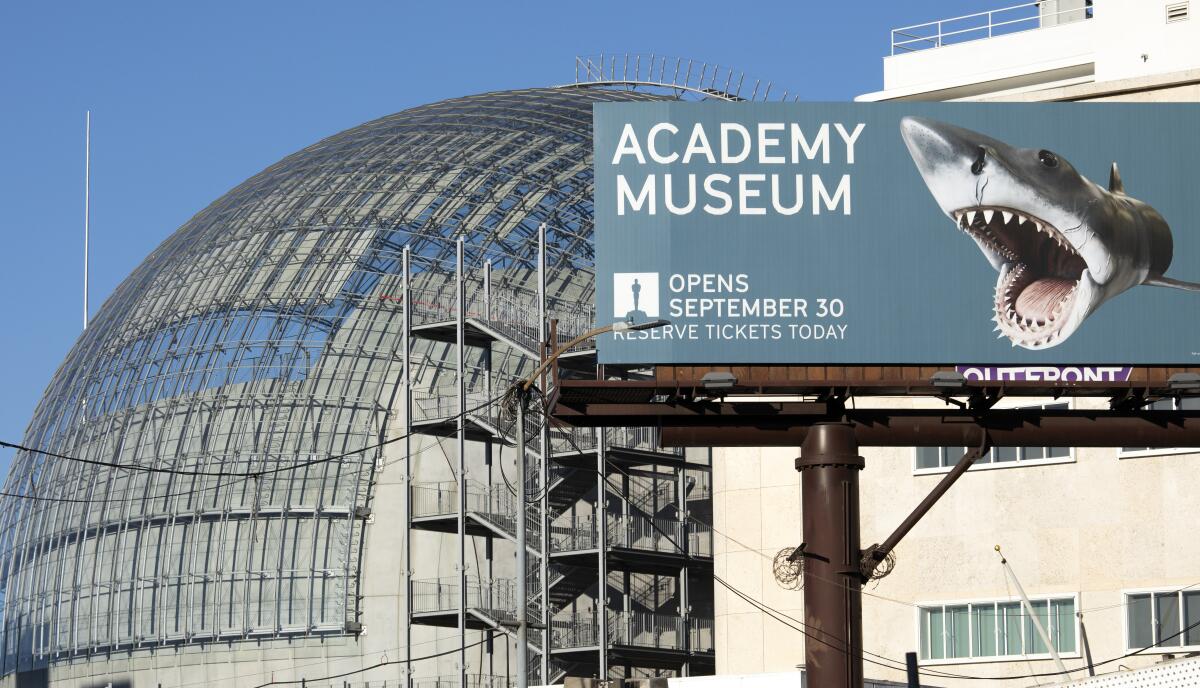
Tucked away throughout the Academy Museum of Motion Pictures’ “Stories of Cinema” galleries are many stations of respite — little built-in rest zones where you can sit and let your movie-loving eyes and mind wander.
One of these, a circular room titled “Behold,” is essentially the museum’s version of a planetarium show, where you can envelop yourself in scenes from “2001: A Space Odyssey,” “Blade Runner,” “A Trip to the Moon,” both versions of “Solaris” and other science-fiction touchstones, their otherworldly images playing out on a curved three-panel screen.

The ultimate film lovers’ guide to the new Academy Museum
FULL COVERAGE of the making of the Academy Museum of Motion Pictures.
Another spot, in the deeply transporting Hayao Miyazaki gallery, is an artificial knoll where you can lie back and stare up at a patch of blue sky, much as the characters do in “Kiki’s Delivery Service,” “Castle in the Sky” and other Miyazaki animated wonderments. Luxuriating for a moment in the faux grass, I was also reminded of the cloud-watching young hero of Richard Linklater’s “Boyhood” — a live-action non sequitur, perhaps, but also the kind of cinematic free-association this museum exists to encourage.
After an afternoon spent dutifully ooh-ing and ahh-ing at Rosebud sleds and ruby slippers, you will likely welcome these opportunities to stop, sit and process. I certainly did during the two brisk, overwhelming tours I’ve taken of the Academy Museum in recent weeks, ahead of its official opening at the end of this month. There is a great deal to see here, and even more to think about. There are ancient woodblock prints, magic lanterns and other early pre-cinema innovations, as well as matte paintings and miniatures from a later era of hand-crafted, pre-digital movie magic. There are “Black Panther” suits and “Star Wars” droids and “Alien” Xenomorphs, plus visual primers on the craft of first-rate artisans such as editor Thelma Schoonmaker and cinematographer Emmanuel Lubezki.
There are Bruce Lee one-sheets, faded pages from Robert Towne’s “Chinatown” screenplay and the carefully preserved May Queen gown that Andrea Flesch designed for “Midsommar.” There is an entire room devoted to the making and legacy of “The Wizard of Oz,” and if that all-timer feels like too obvious a centerpiece for a museum devoted to the marvels of the Dream Factory (it will kick off the museum’s film program with two Sept. 30 screenings in the new 1,000-seat David Geffen Theater), you won’t catch me complaining.
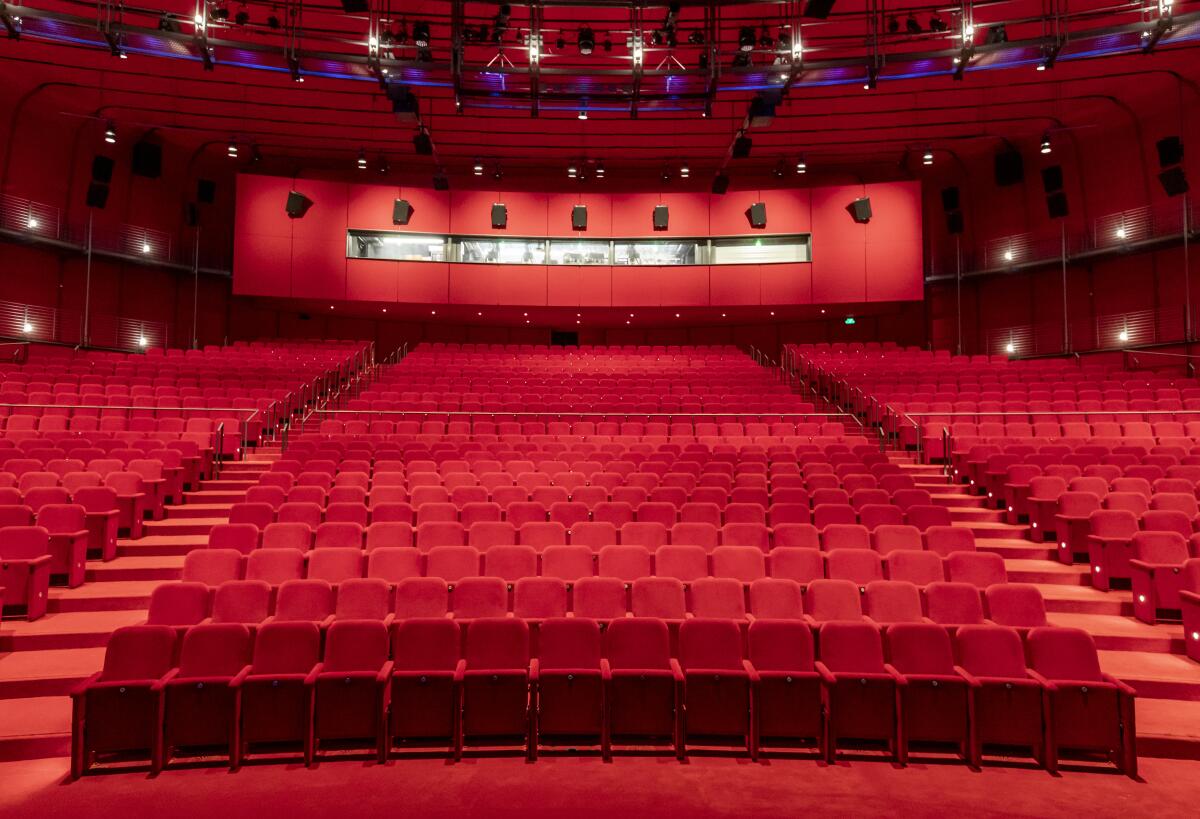
As you pause to admire a Winsor McCay drawing or read about the pioneering work of Oscar Micheaux and Alice Guy-Blaché, you may marvel at the range of film history the curators have sought to compress into some 250,000 square feet of viewing space.
But perhaps the most notable alcoves of the Academy Museum are those where it resists the obvious, or at least takes a break from celebrating the already amply celebrated. As you pause to admire a Winsor McCay drawing or read about the pioneering work of Oscar Micheaux and Alice Guy-Blaché, you may marvel at the range of film history the curators have sought to compress into some 250,000 square feet of viewing space. You will also of course be struck by how much more history remains left out, to be covered (or not) in future incarnations. (A perpetual work-in-progress, the museum plans to keep rotating and refreshing its exhibitions year after year.)
And the history of cinema is not the only thing being commemorated within the painstakingly refurbished walls of the former May Co. building. The museum is also, of course, a dedicated permanent shrine to the Academy Awards, a nearly 94-year-old institution that has long been the academy’s grandest, most celebrated and most dubious contribution to the history of the movies. Most of the Oscar-themed attractions are fittingly encased within the gold-plated cylindrical structure that anchors the museum’s southwest corner, and which seems to have waited decades for just this purpose. Here can be found an Oscars gallery, with 20 or so winners’ trophies displayed in cases like the heads of Princess Mombi, and something called the Oscars Experience, where visitors can pose with a statuette and record their own acceptance speeches.
That last attraction might sound like a waste of space, a frivolous, vulgarizing touch. But it also feels like an honest admission of purpose from an academy that has often embraced silliness along with seriousness, and indeed frequently confused one for the other. It acknowledges a fundamental tension within the motion picture academy itself, which uses the Oscars to present a culturally prestigious, commercially successful image of the movie industry. The Oscars in turn finance — but also overshadow — the academy’s quieter, nobler mission of film education, preservation and research, undertaken and safeguarded by its voluminous archives and libraries.
Renzo Piano never implemented his full LACMA plan. His Academy Museum gave him another shot at this corner of L.A. Our review.
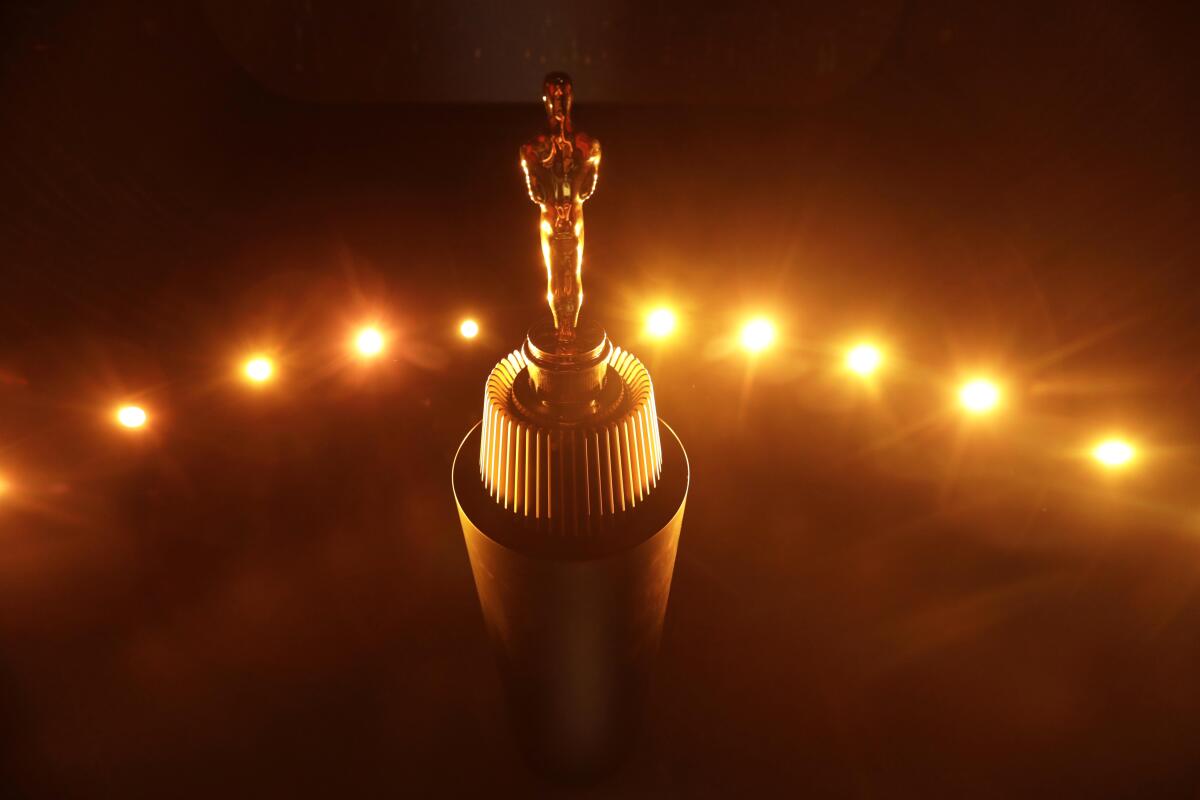
To put it another way, it must celebrate the Oscars with one hand and acknowledge the rich cinematic history that the Oscars have long neglected with the other.
Some of that instructional work now falls to the Academy Museum, which must shoulder the weight of those contradictory aims and straddle the divide between art and commerce — and between education and entertainment — in ways that no other museum dedicated to no other art form would be expected to do. It must reaffirm the power of the movies as a great popular medium, while also shining a light on significant works of art that have long been overlooked in the name of an industry popularity contest. To put it another way, it must celebrate the Oscars with one hand and acknowledge the rich cinematic history that the Oscars have long neglected with the other.
This is a tricky but not impossible task, as senior director of curatorial affairs Doris Berger and her team have deftly demonstrated here. To wit: Their salute to “Citizen Kane” (which, it’s worth remembering, was egregiously underloved by the academy in its day, with nine nominations but only one trophy) sits beside a tribute to Patricia Cardoso’s under-appreciated 2002 independent drama, “Real Women Have Curves” (total Oscar nominations: zero) — a playful yet pointed juxtaposition meant to turn our sense of the American film canon on its head.
Elsewhere, a giant three-screen montage, which plays like a longer, deeper version of the craft-centric clip reels that pop up on Oscar telecasts, feels particularly welcome in a gallery context, where it has the time and space to bring lesser-known work to the fore. (You’ll catch greatest hits like “Lawrence of Arabia” and “Psycho,” but watch long enough and you’ll also see snippets from landmark independent work such as Shirley Clarke’s “Portrait of Jason” and Ousmane Sembène’s “Black Girl.”)
What the curators have endeavored to give us, then, is a survey of filmmaking that — while still heavily reliant on acknowledged classics and inevitably, disproportionately focused on American cinema — isn’t afraid to be smarter than the Oscars. That’s admittedly not the highest bar, but it is still deftly and admirably cleared. This museum is the product of a curatorial sensibility that, compared with the academy members who vote on the Oscars every year, seems more curious and thoughtful about cinema as a global medium; more knowledgeable and wide-ranging in its selection of films and filmmakers; and more honest and transparent about the historic failures of both the academy and the industry it represents.
And because the academy and the industry have done a thing or two — if not enough — to address these failures in recent years, the latest round of delays that have beset this decades-in-the-making museum might have turned out to be a blessing in disguise. As my Times colleague Mary McNamara aptly noted, “The museum opening in September 2021 reflects the real history of film better than the one that would have opened four years earlier.”
How the Academy Museum scoured film history to bring fans face to face with iconic items from “Black Panther,” “Alien,” “Batman Returns,” “T2,” “Dark Crystal” and more movie faves.
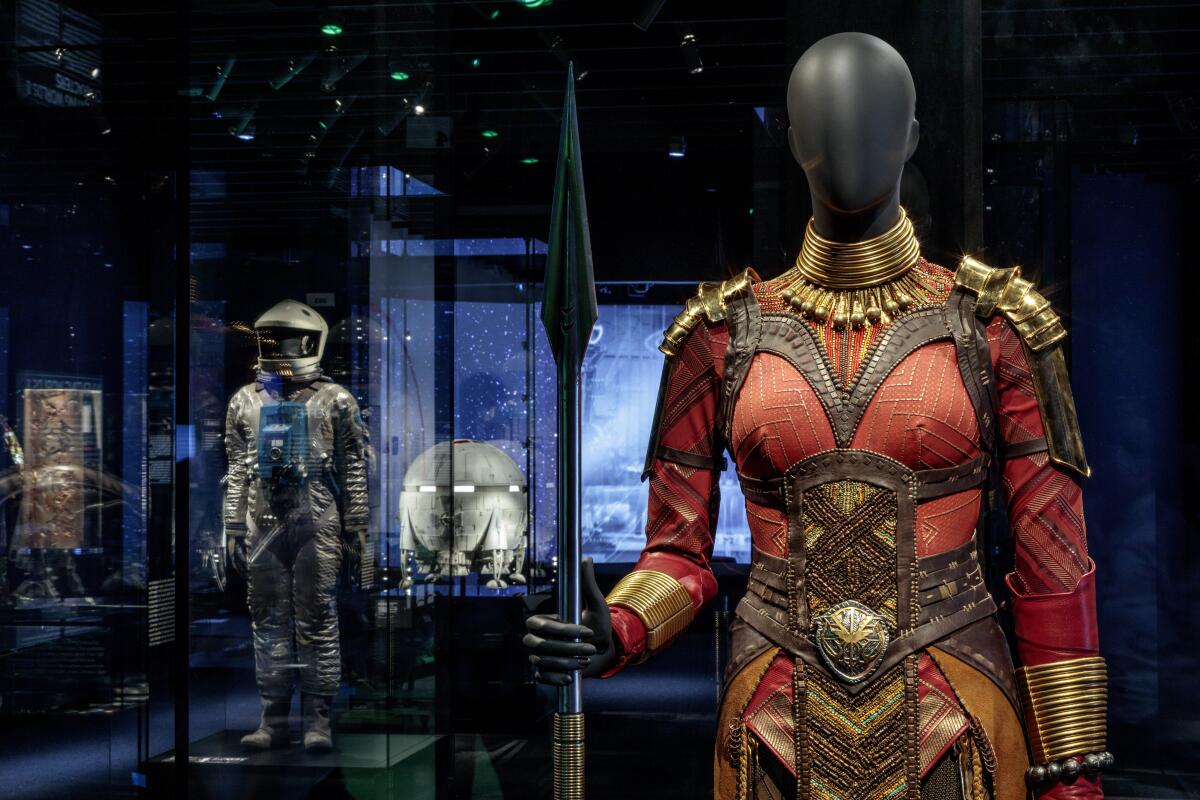
You can see this represented in the museum itself. Without the necessary and ongoing work of the #MeToo movement, it’s doubtful “The Wizard of Oz” gallery would have included a placard noting Louis B. Mayer’s sexual harassment of Judy Garland — certainly a story of cinema worth telling, and one of several blunt acknowledgments throughout the museum that the history of American filmmaking has also been a history of predation by powerful men.
And without the mid-2010s furor over #OscarsSoWhite and the academy’s welcome efforts to diversify and internationalize its membership, the museum might not have been able to show off recent Oscar winners, including “Moonlight” and “Parasite,” that have dismantled the conventional wisdom about what a best picture can be. Or artists like Bong Joon Ho and Chloé Zhao, who, like Alfonso Cuarón and Guillermo del Toro before them, have recalibrated the industry’s understanding of where a great director can come from.
Much of this recent history and its lessons are proudly etched into the panels of the museum’s Oscars gallery timeline. But some of those panels are also written from a sharper, more self-critical distance than I would have expected. Let’s just say that whoever wrote the entry for the 2019 ceremony seems almost apologetic about that year’s big winner, especially when placed alongside what they regard as the more significant achievement of Spike Lee’s adapted screenplay win for “BlacKkKlansman.”
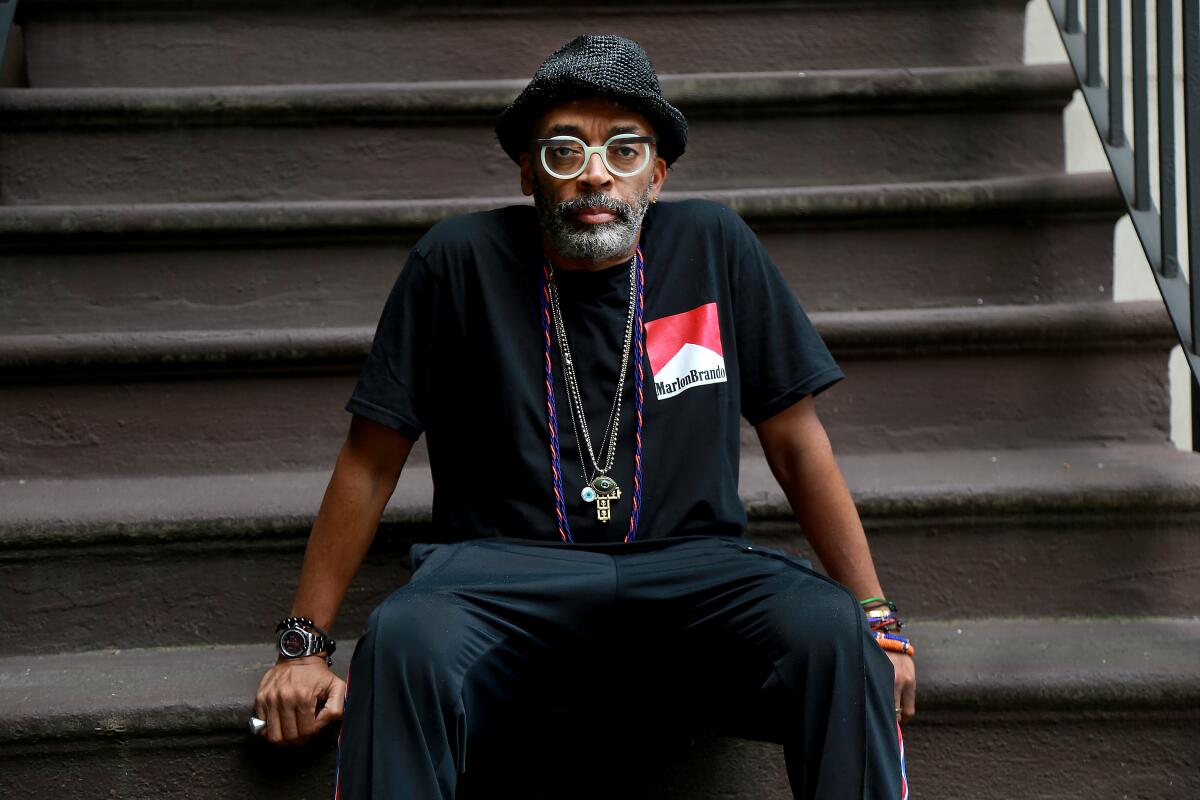
That remains Lee’s first and only competitive Oscar victory (he received an honorary award from the academy in 2015) — a ridiculous fact that the museum has attempted to redress or overlook by devoting a gallery to this vital American filmmaker and his various artistic inspirations. Crammed with professional milestones and personal memorabilia alike, it’s a lovingly assembled tribute as well as a reminder that some of our most important directors — we can throw in Alfred Hitchcock and Stanley Kubrick while we’re at it — have gone egregiously under-recognized by this august institution.
The other two filmmakers receiving their own exhibitions are Miyazaki and Pedro Almodóvar, both unimpeachably shrewd choices whose distinctly ravishing visual styles make them natural candidates for this kind of deep-dive treatment. (The dazzling blues and reds of the Almodóvar display, built around a simple yet immersive arrangement of clips from the Spanish master’s films, make it one of the museum’s most visually striking galleries.) It helps, too, that both Miyazaki and Almodóvar are among a select handful of critically anointed, globally recognized auteurs whose inclusion serves to bolster the academy’s growing international profile without veering too far into (horror of horrors!) obscurity. (And even still, Miyazaki’s animated feature Oscar win for “Spirited Away” — one of the greatest films ever to claim the prize — feels increasingly like an outlier from an academy that consistently defaults to honoring the latest work from American animation studios.)
My hope is that the museum might use its commitment to the acknowledged classics to leverage an equally passionate drive into more adventurous territory.
In a year or two or three, when these and other exhibitions are rolled aside, what will be installed in their place? The possibilities are endless, and hopefully not (too) constrained by the need to appeal to faux-populist, anti-intellectual sensibilities. My hope is that the museum might use its commitment to the acknowledged classics to leverage an equally passionate drive into more adventurous territory — that it might use its accumulated goodwill to spotlight filmmakers from all over the world who don’t carry the name recognition of a Lee, a Miyazaki or an Almodóvar.
Dare we dream of future installations devoted to living titans of the art like Claire Denis, Abderrahmane Sissako, Frederick Wiseman or Jean-Pierre and Luc Dardenne — all of whom the Academy Awards, like most of the moviegoing public, have been largely content to ignore? Would there be room for a space that could educate the public about historic innovations in experimental and avant-garde filmmaking — or perhaps a tribute to Jean-Luc Godard, a 2010 honorary Oscar recipient and (more to the point) one of the most important artists of the last century in any medium? If that’s asking too much, what if the museum were to give the “Citizen Kane”/“Wizard of Oz” treatment to an equivalent masterwork like “Tokyo Story” or “The Rules of the Game” or “Seven Samurai”?
Look, these are just suggestions. I’m not a curator; I’m a critic. And I’m not scolding or demanding; I’m dreaming, inspired in part by this museum’s impressive first steps. But I can already imagine some of the rejoinders: This is the academy, Stupid, and quality and discernment are not what they’re about. That’s exactly right. It’s also exactly why the Academy Museum should keep leaning into them. The more it grapples with — and when necessary, rejects — the imperfect legacy of the institution it represents, the more genuinely insightful about the greatness of this still-young medium it will become.
As the Academy Museum’s chief artistic officer, Jacqueline Stewart will be in charge of screenings and events, giving the past relevance in the present.
More to Read
Only good movies
Get the Indie Focus newsletter, Mark Olsen's weekly guide to the world of cinema.
You may occasionally receive promotional content from the Los Angeles Times.
